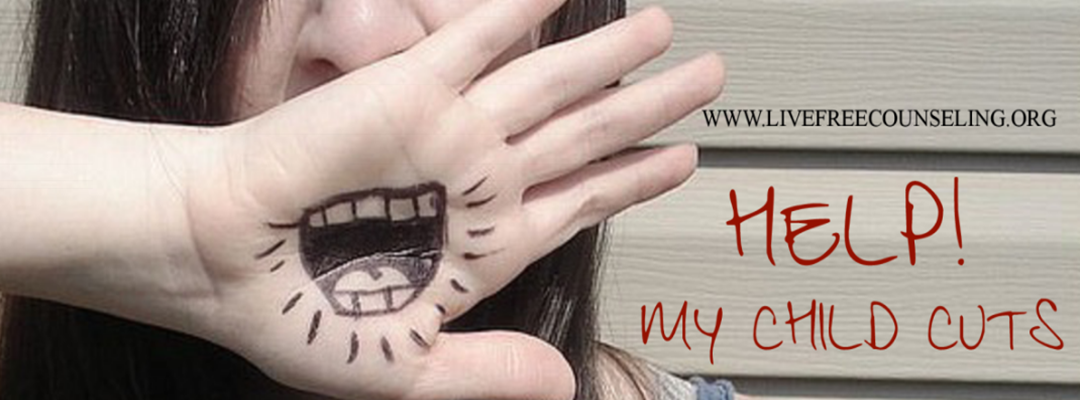There are few things that shock and scare a parent the way that self-harm, particularly cutting, does. While cutting is largely seen in the teen population, it is prevalent in both males and females, all religious affiliations, and socioeconomic status groups. Research varies, but several studies indicate that 12-24% of high school students and young adults have engaged in some form of self-harm (Whitlock, 2010).
UNDERSTANDING CUTTING
After six years of counseling adolescents and adults, I have noticed strong patterns among adolescents who cut. They tend to say some variation of the following five things:
1. I wasn’t trying to kill myself.
2. My parents don’t understand and are freaking out.
3. It was a release from all the pain I feel inside – OR – I just wanted to feel something.
4. It calmed my mind and made me feel better…for a little while.
5. It’s addicting.
Cutting is rarely a suicide attempt. It is, however, a sign that the person is overwhelmed mentally and/or emotionally. It is usually an attempt to calm overwhelming thoughts, release emotional pain, or escape numbness. Sometimes it is a desire to have their body match the pain they are feeling inside.
THE PROBLEM WITH CUTTING
Unfortunately, cutting can work to calm emotional pain temporarily. The problem is that beyond the scars, stigma, potential damage to tendons, and possibility of death; cutting changes how the brain works. It releases endorphins, which over time rewires the brain until the person believes that cutting is the only way to get relief. When that happens, they often end up feeling trapped, addicted, and ashamed.
SUGGESTIONS FOR PARENTS
If your child is cutting, here are a few suggestions:
Seek support for yourself. It is important to work through your feelings of shock, sadness, disappointment with someone, so you can be emotionally present for your child.
Focus on understanding. If you child is cutting, then you can assume they are struggling. Offer caring support and a listening ear. Avoid yelling and lectures. Educate yourself about cutting. Connect with them. Be a safe person to talk to.
Support them in getting the help they need. They may need counseling. They may need your help in removing razors, scissors, knives, or other sharps from the house in order to resist temptation. Ask them how you can help and work together.
WHEN TO CALL 911
Finally, if you are concerned for your child’s life, call 911 or take them to the nearest hospital emergency room. While cutting is rarely a suicide attempt, it can be. Cutting can also cause serious damage if cuts are too deep and they may need medical attention. If in doubt, see a doctor.
RESOURCES
- Cornell University has done extensive research on self-harm. They have an excellent website that provides detailed information and suggestions for teens, parents, friends, and educators: www.selfinjury.bctr.cornell.edu
- Hotlines
- Crisis Hotline for Youth & Families – 800.999.9999
- National Suicide Prevention Lifeline – 800.273.TALK (8255)
Whitlock, J. (2010). What is self-injury? [Fact sheet] Cornell Research Program on Self-Injurious Behavior in Adolescents and Young Adults. Retrieved from http://www.selfinjury.bctr.cornell.edu/factsheet_aboutsi.asp.
________________________________________________________________
Published in the Tri-City TRIBUNE (Cozad, Nebraska) on October 30, 2014.

